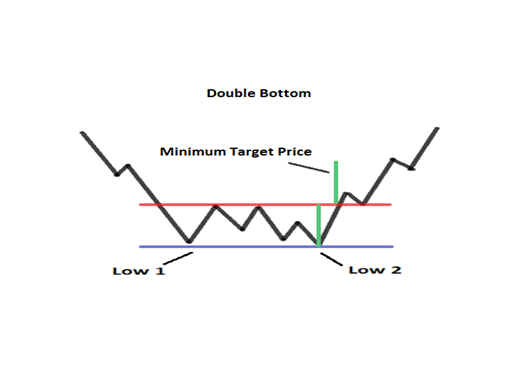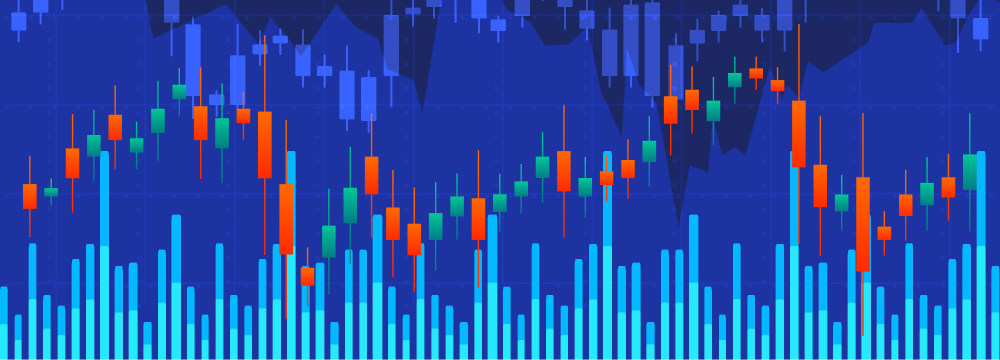Double bottom pattern
A double bottom pattern is a technical analysis pattern that forms when the price of an asset creates two consecutive lows of approximately the same depth, with a peak in between. This pattern is formed by drawing a neckline, which connects the highs of the price between the two lows. The double bottom pattern indicates a potential trend reversal from bearish to bullish.
Here are some ways that traders use double-bottom patterns in their trading strategies:
Identifying potential trend reversals: Traders can use double bottom patterns to identify potential trend reversals from bearish to bullish. When the price breaks above the neckline, it can be a strong indication that the asset's price is likely to increase further. Traders can buy the asset when the price breaks above the neckline.
Setting profit targets: Traders can use the height of the double bottom pattern to estimate the potential price target of the trend reversal. The estimated price target is measured by adding the height of the pattern to the neckline. Traders can use this target to set their profit target for their long position.
Setting stop-loss levels: Traders can use double bottom patterns to set stop-loss levels to limit their potential losses. If the price breaks below the neckline, it can be an indication that the pattern has failed and that the trend may continue. Traders can set their stop-loss orders just below the neckline to minimize their potential losses.
Using additional indicators: Traders can use additional technical indicators in combination with double bottom patterns to confirm their trading signals. For example, traders may use momentum indicators or volume indicators to confirm bullish conditions when the price breaks above the neckline.
In conclusion, double-bottom patterns can be a useful tool in a trader's technical analysis toolkit for identifying potential trend reversals, setting profit targets, and setting stop-loss levels. However, traders should combine this pattern with additional technical indicators and perform thorough analysis before making any trading decisions. As always, it's important to manage your risk and use appropriate position sizing to control your potential losses.

